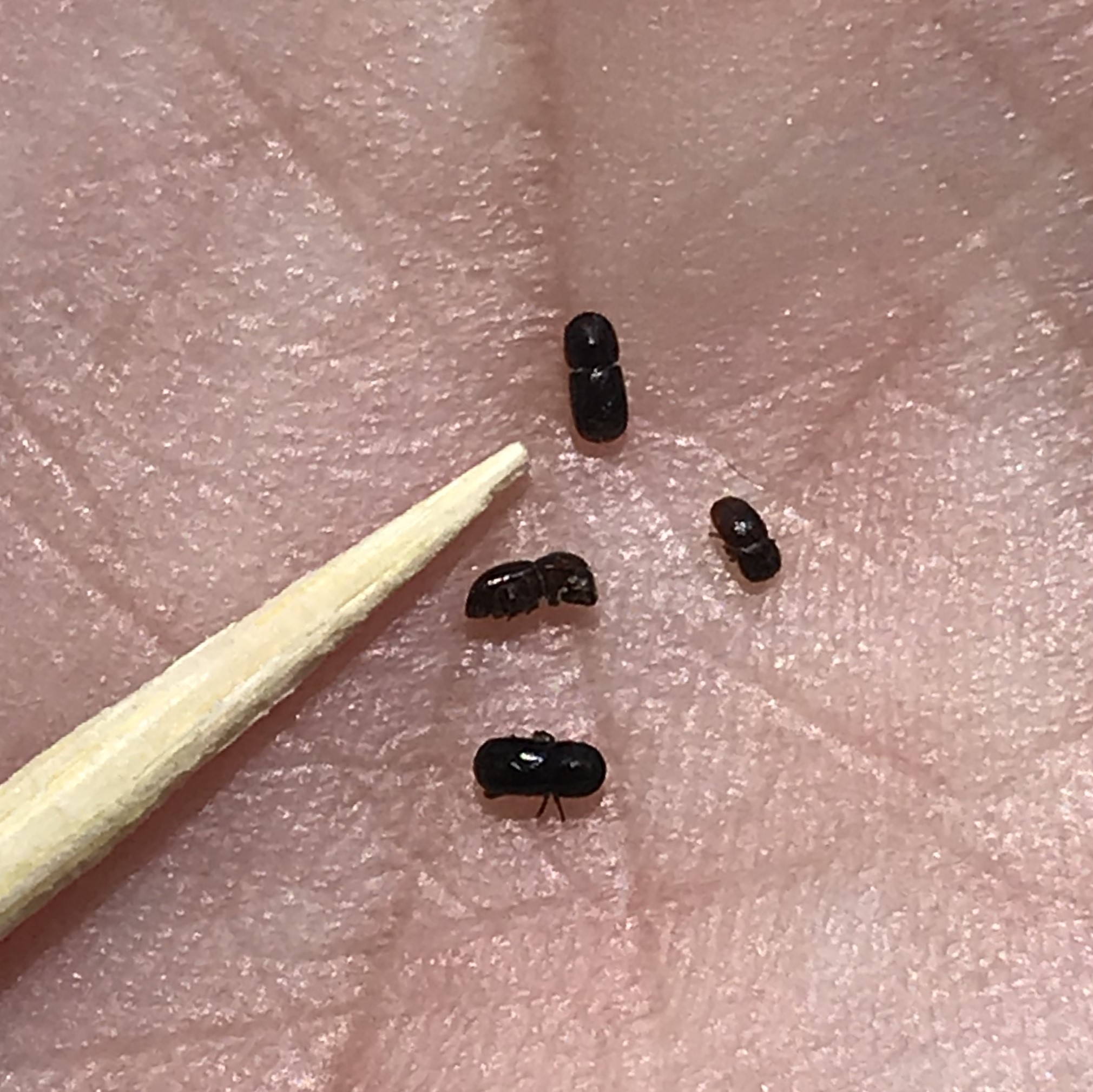
The PSHB is a 2mm long ambrosia beetle native to Southeast Asia that has a symbiotic relationship with three species of fungi. These include the tree pathogen, Fusarium euwallaceae. This fungus provides a food source for the beetle and its larvae, but in susceptible trees, it kills the vascular tissue, causing branch dieback and tree death.
In its native environment in Southeast Asia, it seems as if the beetle and fungus do not cause serious damage because tree species have evolved with the beetle-fungus complex and have resistance towards them, and because there are most likely a suite of natural enemies of the beetle. However, the beetle and fungus were somehow introduced into Israel and California in the early 2000s where they caused serious damage on several ornamental trees as well as avocado trees. In South Africa the impact of the beetle to date is most visible on ornamental trees.
Identification and species name of the beetle
Until December 2018 the PSHB was known as Euwallacea nr. fornicatus. However, Gomez et al. (2018) showed with DNA sequences that 'Euwallacea fornicatus' is actually a species complex including four closely related, but distinct species. These four species of Shot Hole Borer are very similar in shape, and can only be distinguished by specialists under a microscope or with DNA sequences. The four species carry different fungal species, have different host ranges, and different geographical distributions (Gomez et al. 2018). Although they suggested the name Euwallacea whitfordiodendrus should be used for the PSHB, this was an error that was corrected in a subsequent paper by Smith et al. (2019). The correct names of four Shot Hole Borer species in the E. fornicatus complex are:
1. Tea Shot Hole Borer A [TSHB-a = Euwallacea perbrevis (Schedl 1951)]
Distribution: Asia (American Samoa, China, Indonesia, Papua New Guinea, Samoa, Sri Lanka, Taiwan, Thailand), Australia, and introduced in the USA (Florida and Hawaii)
2. Tea Shot Hole Borer B [TSHB-b = Euwallacea fornicatior (Eggers 1923)]
Distribution: Asia (Malaysia, Papua New Guinea, Singapore, Sri Lanka)
3. Polyphagous Shot Hole Borer [PSHB = Euwallacea fornicatus (Eichhoff 1868), previously referred to as Euwallacea nr. fornicatus and Euwallacea whitfordiodendrus (Schedl 1942)]
Distribution: Asia (China, Hong Kong, Japan, Taiwan, Thailand, and Vietnam) and introduced in USA (California), Israel, South Africa, and Western Australia
4. Kuroshio Shot Hole Borer [KSHB = Euwallacea kuroshio Gomez and Hulcr 2018]
Distribution: Asia (Indonesia, Japan, and Taiwan) and introduced in Mexico and USA (California)
To date, only the PSHB has been found in South Africa. However, both the PSHB and KSHB have invaded California, while TSHB-a has invaded Florida. These species carry similar fungi, have similar life styles and similar effects on trees. With our borders being open for trade to Southeast Asia, the risk that one of the other species can be introduced is very high. Co-occurring species increase the chances for interbreeding which will enhance the adaptability of the beetles to new hosts and new environments, posing a greater threat. From a management perspective, they are dealt with in the same ways. In California they have thus started referring to the PSHB and KSHB jointly with the single term Invasive Shot Hole Borers (ISHB). It is recommended that for management and legislative purposes we also adopt the term ISHB in South Africa.

